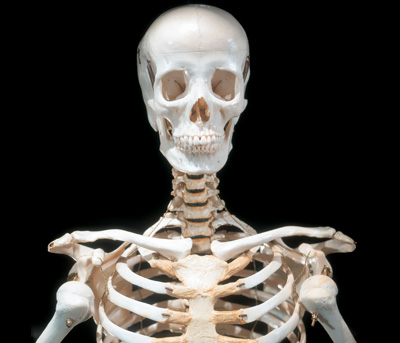YOUR HEALTH
IMPROVING THE SAFETY OF YOUR BATHROOM
You've probably heard that water on the floor can cause you to slip in the bathroom, or that a loose grab bar can propel you to the bottom of the tub. Here are a couple of dangers you might not have thought of:
- An all white bathroom with shiny fixtures, bright lights and mirrors can cause glare that make people disoriented. They can even be blinded by the brightness, especially if their vision isn't perfect. Reduce the glare by using frosted bulbs. Consider painting the walls a contrasting color which can help you and your guests keep their balance.
- Don't try to make the bathroom warmer for a child or older adult by using a space heater. They produce a risk of electrocution. Install a permanently wired heating unit instead.
- Check your shower doors for cracks, chips or the glass rubbing against metal. Shower doors have been known to shatter. In one recent year, the Consumer Products Safety Commission received 2,000 such reports. Of course, doors will also break if someone falls into them.
- Shower doors are made of tempered glass, which means they shatter into hundreds of pieces and shards. Anyone present can be injured by falling into the pieces. If it ever happens, throw one or more towels over the broken pieces so you and others can walk out safely.
MANY YOUNG LIVES LOST IN CAR CRASHES
From 2002 through 2011, there was a 42 percent drop in road crash deaths of children 12 and under, according to the Centers for Disease Control and Prevention. But 9,000 children died. Researchers found that one-third of children killed in crashes in 2011 were not buckled up. Using appropriate child restraints is the best way to prevent these deaths.
All states require safety seats for small children. Florida and South Dakota are the only states that do not require booster seats for older children.
YOU COULD GET A COLONOSCOPY WHILE DOING SOMETHING ELSE
PillCam is one of the new devices that make colon cancer screening less invasive. Made by Covidien, a video camera is embedded in it. It's the size and shape of a vitamin pill.
Colonoscopies are one of the most effective cancer prevention tools, yet many people avoid them either because the preparatory procedures are unpleasant or they fear the test will be painful. It isn't. About 51,000 deaths are attributed to colon cancer each year in the United States.
PillCam travels through the digestive system over the course of several hours, wirelessly transmitting images to an external data recorder. The maker, Covidien, is seeking broader approval. If approved, people who are not at high risk will be permitted to go about their normal days while the PillCam works its way through their bodies.
The risk spectrum goes from average to increased, to high risk.
PHYSICAL THERAPY BETTER THAN SURGERY FOR KNEE ARTHRITIS
Earlier this year, researchers evaluated 48 studies in which physical therapy (PT) was compared with all non-exercise treatments for osteoarthritis of the knee. They found that the greatest reduction in pain was experienced with quadriceps specific exercise.
The most effective results were experienced from supervised, thrice weekly PT regimens lasting at least four weeks. The conclusions were reported by Duke Medicine and published in the March 2014 issue of Arthritis Rheumatology.
The evaluation also showed that physical therapy produced better results than arthroscopy, minimally invasive surgery for meniscal knee tears in patients with OA. The arthroscopy did not benefit most patients. In many cases, it was physical therapy alone that alleviated pain.

HERE'S AN UPDATE ON THE ALCOHOL/BONE DENSITY EFFECT
Doctors at Tufts University are still getting questions about whether an alcoholic drink or two a day is good for your bones or not. Katherine Tucker, adjunct professor at Tufts' Friedman School answers:
"It has long been thought that alcohol is bad for bones, and it's clear that heavy drinking consumers have a higher risk of osteoporosis. But studies now show that moderate alcohol consumers have higher bone mineral density (BMD) than non-consumers."
In a previous study, Tucker and associates concluded that the positive relationship between intake of alcohol and BMD in men and postmenopausal women showed that alcohol intake, particularly from beer and wine, may protect bone health. However, intake of more than two drinks per day of liquor in men was clearly harmful. One alcoholic drink per day is suggested for women.
The benefits are thought to be related to the estrogenic effects of alcohol, polyphenols in wine or beer, and the silicon in beer.
© 2014 TLC Magazine Online, Inc. |